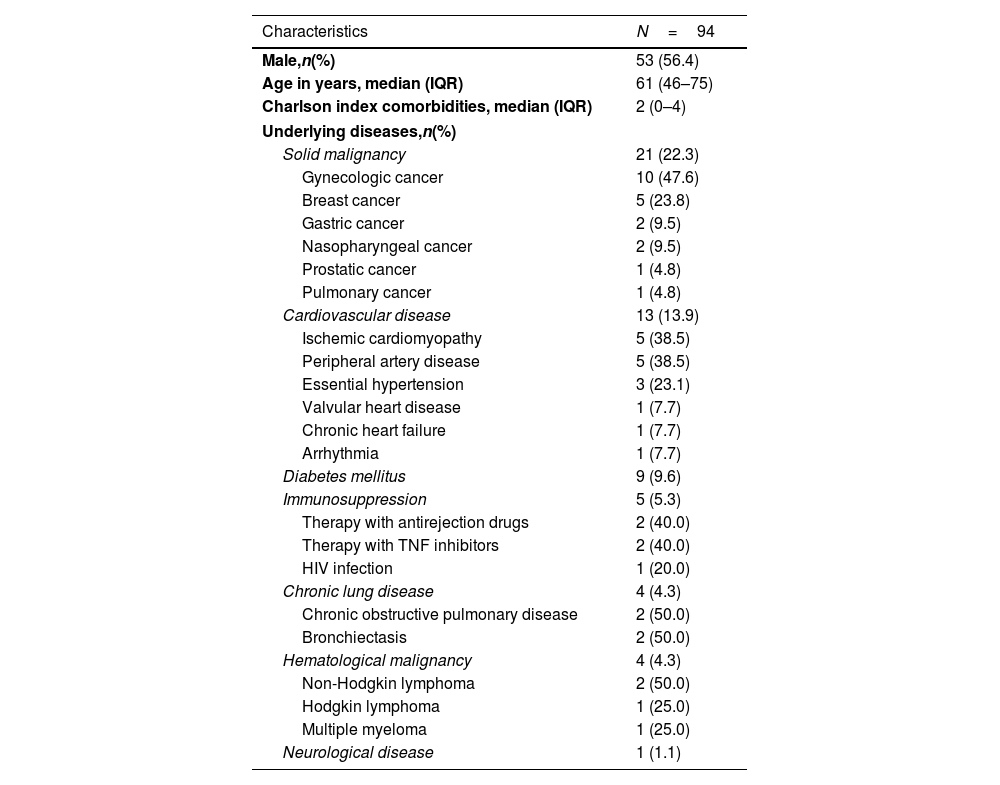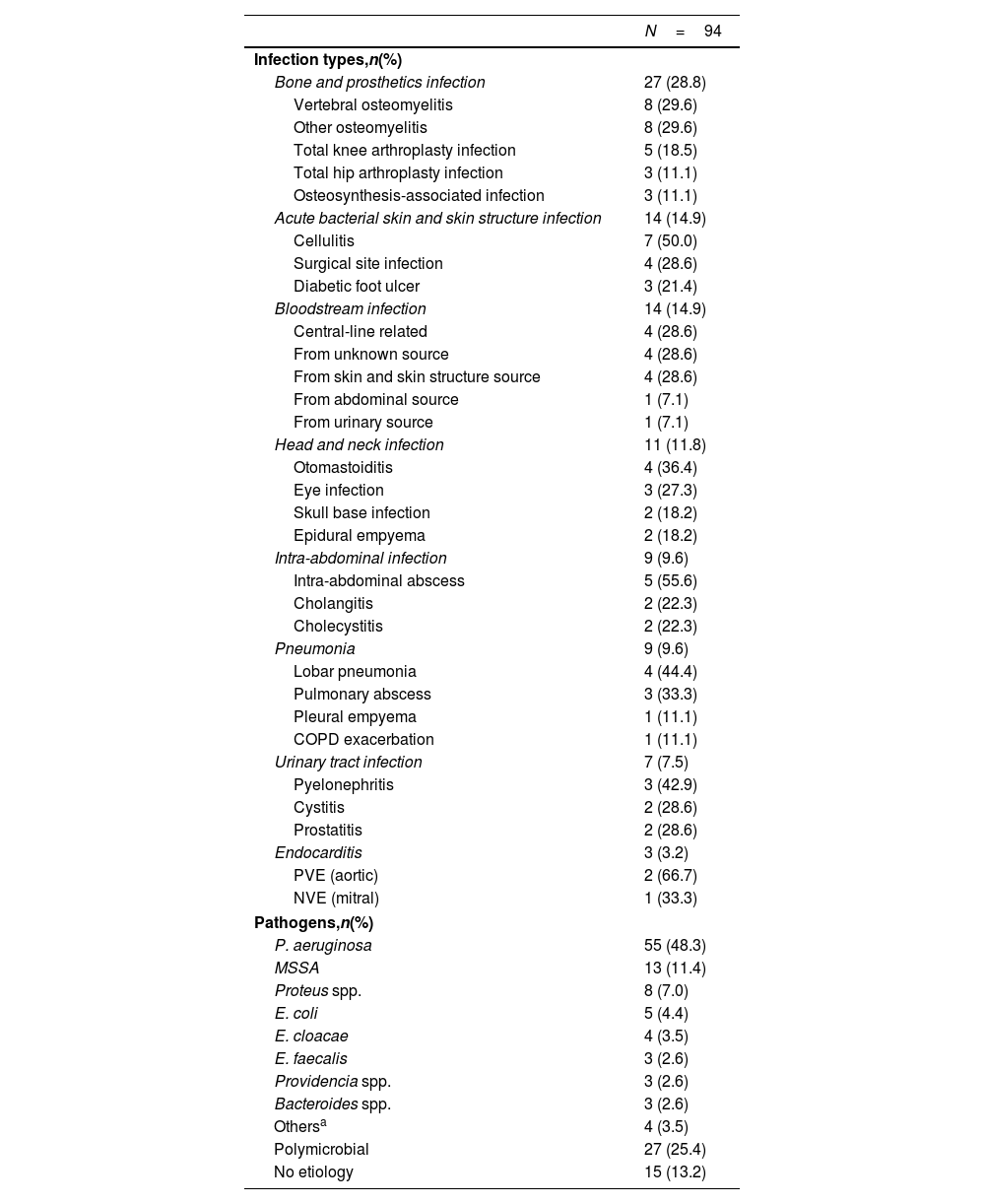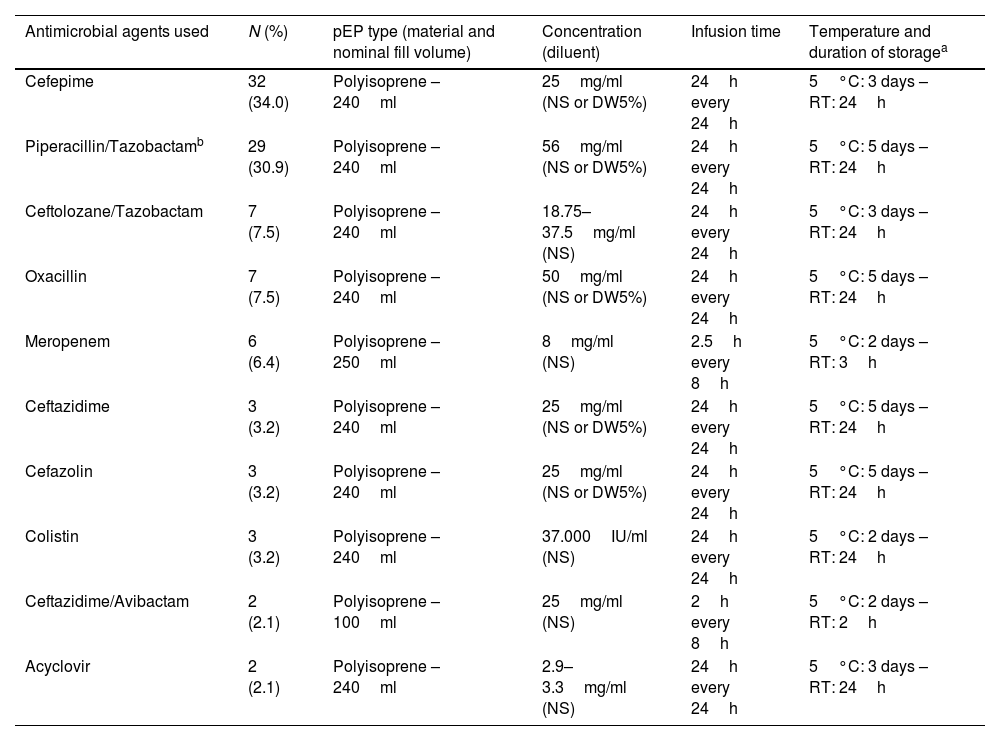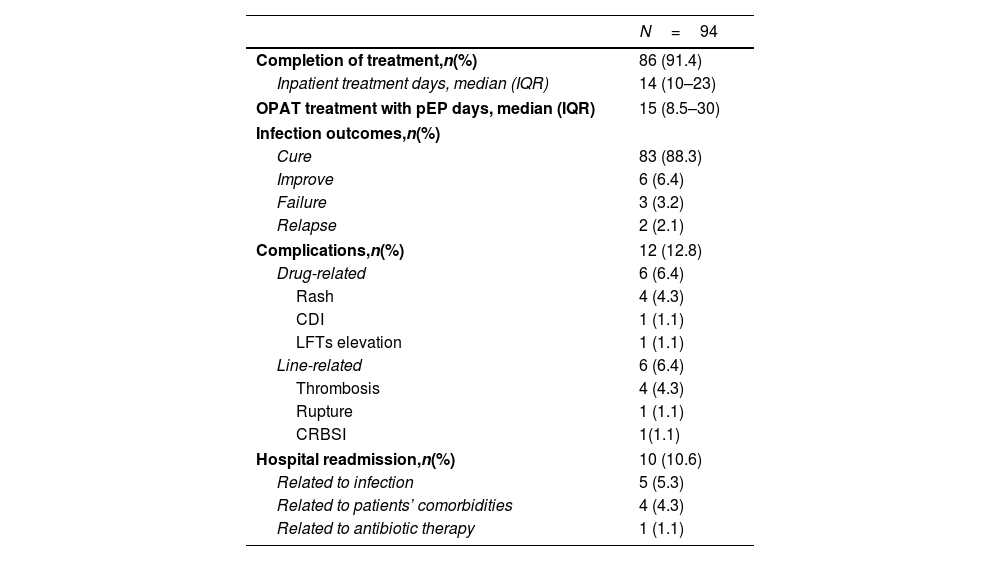This study aimed to present real-life data on the use, efficacy, and safety of administering antibiotic therapy through portable elastomeric pumps (pEP) in the outpatient setting.
MethodsThis retrospective observational cohort study was conducted from January 2020 to May 2023 in a large academic hospital in Rome, Italy. All patients receiving antibiotic therapy via pEP were included up to a follow-up period of 90 days after the end of antibiotic therapy.
The primary outcome was the treatment response. Secondary endpoints were adverse events attributable to the drug administered, the vascular catheter, or the infection itself.
ResultsOf the 490 patients referred to our outpatient parenteral antibiotic therapy (OPAT) unit, 94 (19.2%) received antibiotic therapy via pEP and were included in the final analysis. The most frequently treated infections were those involving bone and prosthetics, including spondylodiscitis (n=27; 28.8%). Most infections were due to Pseudomonas aeruginosa (n=55; 48.3%). Cefepime (n=32; 34.0%), piperacillin/tazobactam (n=29; 30.9%), ceftolozane/tazobactam (n=7; 7.5%), and oxacillin (n=7; 7.5%) were the most frequently administered antibiotics. The infection cure rate reached 88.3% (n=83). 12 patients (12.8%) reported adverse events, of which half (6.4%) were drug-related and half (6.4%) were line-related.
ConclusionsOPAT through portable elastomeric infusion pumps proved to be safe and effective. It also contributed to the reduction of healthcare costs, fully respecting the principles of personalized medicine. This strategy has emerged as a promising tool for antibiotic stewardship and infection control.
El objetivo de este estudio es presentar datos sobre el uso, la eficacia y la seguridad de administrar terapia antibiótica a través de bombas elastoméricas portátiles (BEP) en pacientes ambulatorios.
MétodosEste estudio observacional retrospectivo se realizó entre enero de 2020 y mayo de 2023 en un gran hospital académico de Roma, Italia. Se incluyó a todos los pacientes que recibieron tratamiento antibiótico mediante BEP hasta un período de seguimiento de 90 días después del final de la terapia antibiótica. El resultado primario fue la respuesta al tratamiento. Los criterios de valoración secundarios fueron los efectos adversos atribuibles al fármaco administrado, al catéter vascular o a la propia infección.
ResultadosDe los 490 pacientes remitidos a nuestra unidad de tratamiento antimicrobiano domiciliario endovenoso (TADE), 94 (19,2%) recibieron tratamiento antibiótico vía BEP. Las infecciones tratadas más frecuentemente fueron aquellas de huesos y prótesis, incluyendo espondilodiscitis (n=27; 28,8%). La mayoría de las infecciones se debieron a Pseudomonas aeruginosa (n=55; 48,3%). Cefepima (n=32; 34,0%), piperacilina/tazobactam (n=29; 30,9%), ceftolozano/tazobactam (n=7; 7,5%) y oxacilina (n=7; 7,5%) fueron los antibióticos más frecuentemente administrados. La tasa de curación de la infección alcanzó el 88,3% (n=83). Doce pacientes (12,8%) notificaron eventos adversos, de los cuales la mitad (6,4%) estaban relacionados con el fármaco y la otra mitad (6,4%) estaban relacionados con el catéter.
ConclusionesEl TADE utilizando BEP demostró ser seguro y efectivo. También redujo los costes sanitarios, respetando los principios de la medicina personalizada. Esta estrategia es una herramienta prometedora para el uso optimizado de antimicrobianos y el control de las infecciones.
Article
Socio de la Sociedad Española de Enfermedades Infecciosas y Microbiología Clínica

Para acceder a la revista
Es necesario que lo haga desde la zona privada de la web de la SEIMC, clique aquí
Para realizar los cursos formativos
La actividad estará abierta para socios de la SEIMC. IMPORTANTE, recuerde que requiere registro previo gratuito. Empezar aquí











